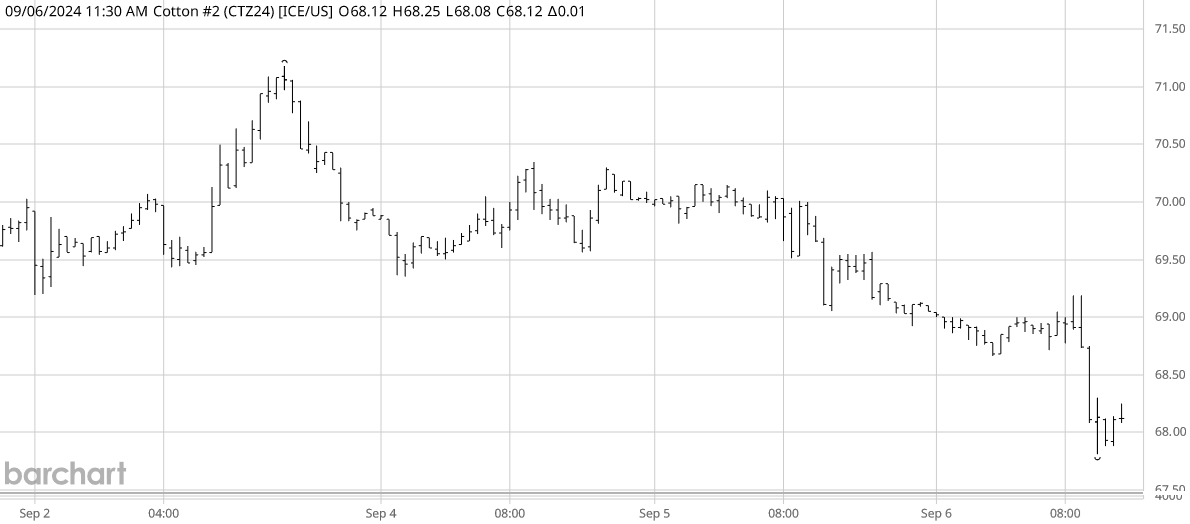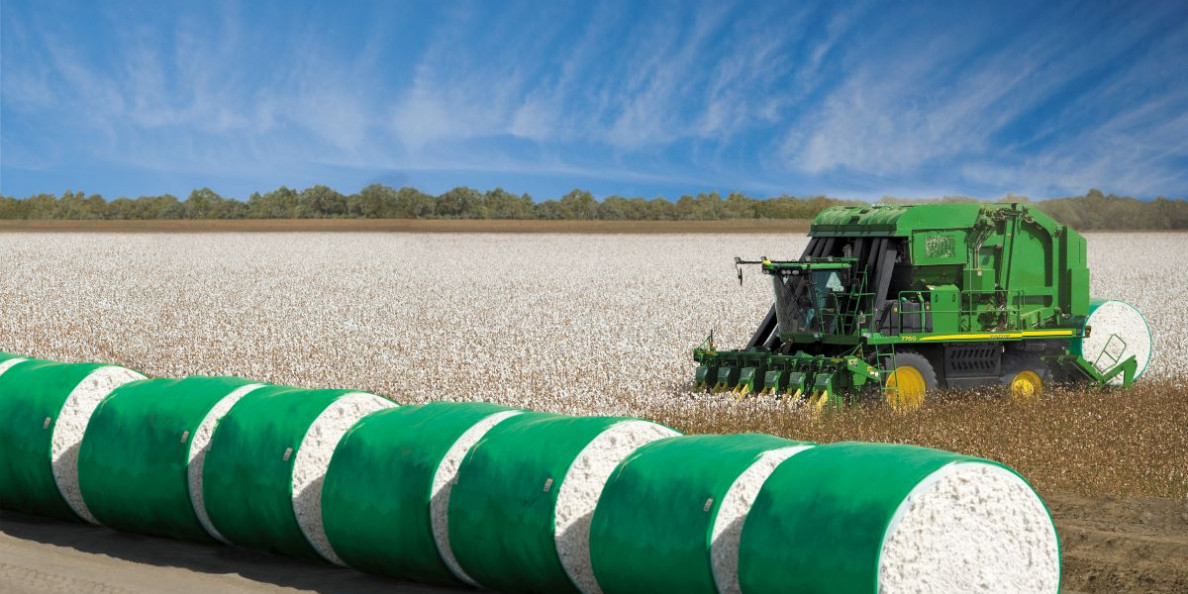For the week ending Friday, September 6, the most active Dec’24 cotton futures contract zigged and zagged around 70 cents through Thursday before weakening into a downtrend that tanked on Friday (see chart above courtesy of Barchart.com). Friday’s settlement was 67.88 cents per pound, down 156 points on the day. Chinese cotton prices and the A-Index followed a similar path as ICE futures, peaking early in the week and then weakening two cents by Friday.
In other markets, CBOT corn and soybeans, as well as KC wheat futures all traded flat, then trended higher before partially resetting on Friday. U.S. dollar index started the week trading flat, then took gentle glide path lower, and ended the week in a volatile gyration. Other macro influences (i.e., GDP, inflation, and interest rate policy) continued to reflect mixed/changing expectations.

Cotton-specific influences this week included modestly decent U.S. export sales. The pace of 2024/25 export shipments was below the needed weekly average pace to reach USDA’s target level of exports, especially for the time of the year. In terms of weather, this week saw continued widespread showers over much of the Cotton Belt, especially along the Gulf Coast. Those showers might still be beneficial in West Central and West Texas. And on the other side of the world, the Indian monsoon rains are forecast to continue above average, which typically contributes to higher Indian/world production.
ICE cotton futures open interest gradually rose this week while futures prices were mixed-to-lower. As of Tuesday September 3 (released Friday September 6) the weekly snapshot of speculative positioning showed mixed speculative positioning, week over week, included 3,629 fewer hedge fund longs, 2,890 fewer hedge fund shorts, and a 2,944 increase in the index fund net long position.
For more details and data on Old Crop and New Crop fundamentals, plus other near term influences, follow these links (or the drop-down menus above) to those sub-pages.
Πηγή: TAMU

